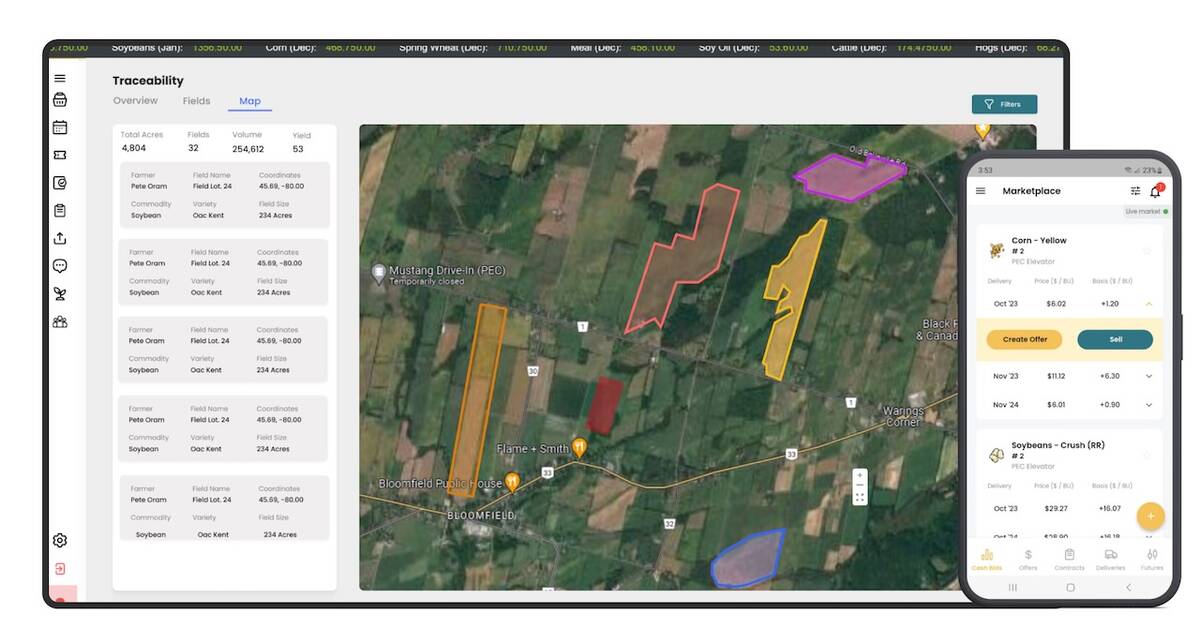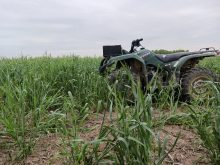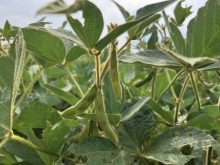Growers often fall into two categories: those who follow convention and those who set their own pace amid questions from others.
Meet Reuben Stone.
Operating a value-added farm business near Cobden, Ont., Stone grows several specialty crops including peas and hemp, while servicing a growing cover crop market. In the latter discipline he’s made a satisfying discovery: broadcasting cereal rye into a standing soybean crop works as a cover.
Read Also

Ontario company Grain Discovery acquired by DTN
Grain Discovery, an Ontario comapny that creates software for the grain value chain, has been acquired by DTN.
Why it matters: Rye as a cover can have multiple benefits for a soybean crop.
Planting winter wheat as a follow to soybean harvest may be the standard practice, but Stone maintains it’s “a bit of a stretch” for his region of Eastern Ontario.
Some nearby growers can make that rotation work but he says broadcasting rye four to five weeks prior to soybean harvest creates a relay-cropping effect, with a fully established cover crop once the soybeans come off.
“I was introduced to a lot more of it from further south in the U.S.” says Stone, who operates Valley Bio Ltd. alongside his wife, Keanan, and their children.
“Rye is a favourite, just because of the winter hardiness and the aggressiveness in the spring. You can grow it between October to the middle of May and we can put on three tonnes of biomass – maybe four – and I don’t know of any other crop that can do that type of production through the coldest part of the year.”
In 2021, he covered 450 acres in six hours during the first week of September. The addition of a broadcast rye cover crop has several other advantages: at four weeks, Stone said it provided an improved equipment-carrying capability, cleaner soybeans and warmer soils at the onset of winter.
“You can see quite a difference. Where the soil is warmer, it takes longer to freeze up and the snow still melts,” he says adding that weed suppression is another advantage.
“There’s plenty of data now, whether that’s from the U.S. or here in Ontario. The numbers out of the U.S. say it’s a one-year pay-back and that can pay for the entire rye cover crop coming out of soybeans, just in the suppression of weeds.”
Stone has also fed cattle with the cover crop, although he concedes there’s a give-and-take. Harvesting at early boot stage means better protein levels, yet its maximum volumes come with a slightly later harvest.
“We have our own experiences that tended to be a little on the later side of the forage harvest window, getting on to what would be termed over-mature,” he says, noting there are data to show it’s acceptable as feed.
“It’s gone to beef cows and there have been no complaints, and it’s certainly gone over well with the small herd that we have.”
He also harvests it as wrapped silage because of timing in getting things off the field and managing subsequent crops. Most of a rye cover crop is harvested in the second half of May, so the bulk of the feed for his operation is taken care of early, allowing Stone to get ahead on planting.
There’s also the option of harvesting it as a grain crop, along with terminating early, later at planting or the forage option.
“There’s quite a bit of flexibility with a rye cover crop and there has to be a plan whenever you’re doing these things,” says Stone
He tries to get into the field at the first hint of yellowing in the leaves and seed before leaf-drop. He also plants a moderate- to short-season maturity soybean variety on most of his acres, although he wants to try the practice with a longer-maturity bean in the future.
Long-term goals
The science behind rye as a cover crop is supportive on a short-term basis, but the benefits to soil health are what Stone refers to as “the long game.”
When he walks the fields a month after harvest, there’s less mud sticking to his boots and he’s found a visible difference in soil texture.
There are drawbacks, including tramping and seed costs. In a worst-case scenario, Stone estimates a loss of three or four bushels due to tramping, depending on equipment.
“You’re probably not going to set soybean yield records, but that isn’t the goal with this,” says Stone. “These practices help you to be more efficient with nutrients, with moisture, with overall farm profitability when you’re double-cropping a cereal or forage crop with soybeans the same year. It’s efficiency and overall profitability that are the goals.”













